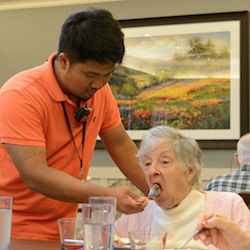
Gender and racial disparities among direct care workers could be contributing to the difficulty of attracting new candidates for such jobs, according to a new report that PHI released Wednesday.
“Unfortunately, direct care jobs do not provide economic stability to women of color and their families — they are generally more likely to live in poverty and rely on public benefits than their counterparts, and they have smaller family incomes to rely on for support,” wrote the report’s author, Stephen Campbell, a policy research associate for PHI. ”In this context, improving the economic well-being of women of color in direct care would improve their quality of life, and it would help attract workers to this important occupation as well as help retain them.”.
Among the statistics shared in the report:
- Women of color make up almost half of all direct care workers in the United States — personal care aides, nursing assistants and home care workers who work in assisted living communities, homes and other settings, according to PHI.
- Women of color who work in direct care are more likely to live in poverty and rely on public assistance than their counterparts in the direct care workforce. The poverty rate for women of color in direct care (22%) is higher than the poverty rate for white women (17%), white men (14%) and men of color (12%).
- Women in direct care positions generally have lower levels of formal education than men do, and white direct care workers generally have higher levels of formal education than do direct care workers of color. Fifty-three percent of women of color and 45% of white women in the direct care workforce have a high school education or less, compared with 43% of men of color and 37% of white men.
- Men of all races and women of color are large and growing segments of the direct care workforce. For instance, the number of male home care workers tripled from 60,000 in 2005 to 182,000 in 2015.
- Men and people of color in direct care have higher personal earnings than women and white workers, respectively, and white workers have higher family incomes than people of color. Median personal earnings are $20,000 for men of color and $17,500 for white men, whereas median personal earnings for women of color are $17,300, compared with $16,000 for white women.
The U.S. needs “targeted solutions that explicitly address racial and gender inequality, or we’ll continue to threaten the pipeline of workers needed for this critical occupation,” Robert Espinoza, vice president of policy at PHI, said in a statement.
The report was released as part of PHI’s #60CaregiverIssues campaign.



